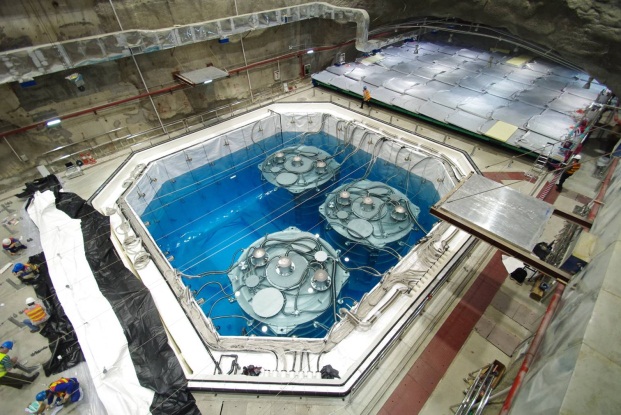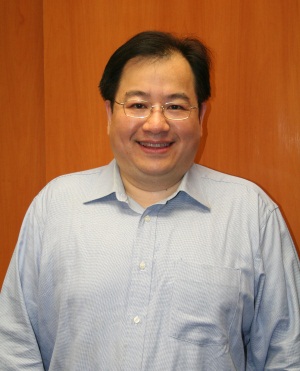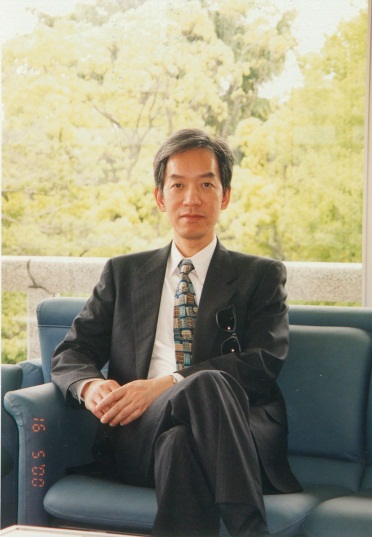Media
Announcing the First Results from Daya Bay: Discovery of a New Kind of Neutrino Transformation
08 Mar 2012
Combining the efforts of researchers all over the world, the Daya Bay Reactor Neutrino Experiment today reported the first results on answering some of the most puzzling questions about elusive elementary particles known as neutrinos. From Dec. 24, 2011, until Feb. 17, 2012, scientists in the Daya Bay collaboration observed tens of thousands of interactions of antineutrinos (anti-partners of neutrinos), caught by six massive detectors buried in the mountains adjacent to the nuclear reactors of the China Guangdong Nuclear Power Group. The Hong Kong team comprising Dr John K C Leung and Dr Jason C S Pun of the Department of Physics, The University of Hong Kong and Professor Ming-chung Chu of the Department of Physics, The Chinese University of Hong Kong, have been active members of the Daya Bay Collaboration since its formation. ‘It's really amazing that we are able to measure this last mixing angle of neutrino oscillation with precision within a short period of data taking. The result will enable us to design next generation of neutrino experiments to understand more about the matter anti-matter asymmetry in the universe.' said Dr John K C Leung, HKU. Dr Jason C S Pun also echoed Dr Leung, saying ‘It has been an exciting 6 months since we started data taking in August 2011 with the first two detectors. We could not have completed this measurement without the full cooperation among all members of this international collaboration. '
Neutrinos, the wispy particles that flooded the universe in the earliest moments after the big bang, are continually produced in the hearts of stars and other nuclear reactions. Untouched by electromagnetism, they respond only to the weak nuclear force and even weaker gravity, passing mostly unhindered through everything from planets to people. Traveling at close to the speed of light, the three basic neutrino "flavors" - electron, muon, and tau neutrinos, as well as their corresponding antineutrinos - mix together and oscillate (transform), but this activity is extremely difficult to detect. The challenge of capturing these elusive particles inspired the Daya Bay collaboration in the design and precise placement of its detectors.
The Daya Bay collaboration measure a crucial quantity related to the third type of oscillation, in which the electron-flavoured neutrinos morph into the other two flavoured neutrinos. This transformation is due to the least-known neutrino "mixing angle," denoted by θ13 (theta one-three). The Daya Bay experiment benefits from having more target mass than any similar experiment, plus as much or more reactor power, thus able to record unmatched number of anti-neutrinos. The first results indicate that theta one-three, expressed as sin2 2θ13, is equal to 0.092 plus or minus 0.017. This precise measurement completes an essential piece of our understanding of the neutrino oscillation and paves the way for the future understanding of matter-antimatter asymmetry in the universe.
The Daya Bay experiment counts the number of electron antineutrinos detected in the halls nearest the Daya Bay and Ling Ao reactors and calculates how many would reach the detectors in the Far Hall if there were no oscillation. The number that apparently vanish on the way (oscillating into other flavors, in fact) gives the value of theta one-three. Because of the near-hall/far-hall arrangement, it's not even necessary to have a precise estimate of the antineutrino flux from the reactors.
"Although we're still two detectors shy of the complete experimental design, we've had extraordinary success in detecting the number of electron antineutrinos that disappear as they travel from the reactors to the detectors two kilometers away," says Kam-Biu Luk of the U.S. Department of Energy's Lawrence Berkeley National Laboratory (Berkeley Lab) and the University of California at Berkeley. Luk is co-spokesperson of the Daya Bay Experiment and heads U.S. participation. "What we didn't expect was the sizable disappearance, equal to about six percent. Although disappearance has been observed in another reactor experiment over large distances, this is a new kind of disappearance for the reactor electron antineutrino." Luk is the alumnus of HKU Physics and also the Hung Hing Ying Distinguished Visiting Professor in Science and Technology of HKU.
The Daya Bay experiment plans to stop the current data-taking this summer to install the final two detectors to complete the experimental configuration. Refined results will open the door to further investigations and influence the design of future neutrino experiments - including how to determine which neutrino flavors are the most massive, whether there is a difference between neutrino and antineutrino oscillations, and, eventually, why there is more matter than antimatter in the universe. "Hopefully Hong Kong scientists and students can also participate in these future fundamental science experiments," said Dr Pun.
For press enquiry, please contact Ms Cindy Chan, Communication Manager of Faculty of Science, at 2241-5286/ 6703- 0212 or by email at cindycst@hku.hk; or Dr John K C Leung, Associate Professor of Physics at 2859-2858; or Dr Jason C S Pun, Assistant Professor of Physics at 2859-1962.
Supplementary Information - the Daya Bay Collaboration Team
The Daya Bay Collaboration includes over 200 scientists from 39 institutes in China, USA, Hong Kong, Taiwan, Czech Republic, and Russia. This is the first time in history that researchers from Hong Kong have joined such a major international research project in elementary particle physics. With funding support of HK$17M from the Research Grants Council of Hong Kong, the Hong Kong team has designed and built a mineral oil monitoring system and a Nitrogen cover gas system for the antineutrino detectors, as well as constructed a continuous Radon monitoring system for the experiment. The team also contributes to the data acquisition and analysis works.
In support of the Daya Bay Experiment, the Department of Physics, HKU, in collaboration with researchers from CUHK, U.C. Berkeley, Brookhaven National Laboratory, National Taiwan University, National Chiao-Tung University, National United University, and Institute of High Energy Physics, Chinese Academy of Sciences, has also developed a satellite laboratory inside Aberdeen Tunnel to study high energy cosmic rays that penetrate deep underground and their interactions. Data taking is underway inside the laboratory to study background radiations in an underground environment similar to that in the Daya Bay experimental halls. Over 20 physics students from HKU have contributed to the Daya Bay and Aberdeen Tunnel Experiment.
Matter-Antimatter Asymmetry
Scientists generally believe that the birth of the universe can be explained by the Big Bang Theory. In that theory, the amount of matter produced should be identical to that of the antimatter. However, while the observable universe around us is filled with matter, overwhelming portion of the antimatter had vanished. Physicists believe that studies of the fundamental properties of basic particles may hold the key to solving this mystery.
Please visit http://www.scifac.hku.hk/news/media?page=1 for pictures download.





